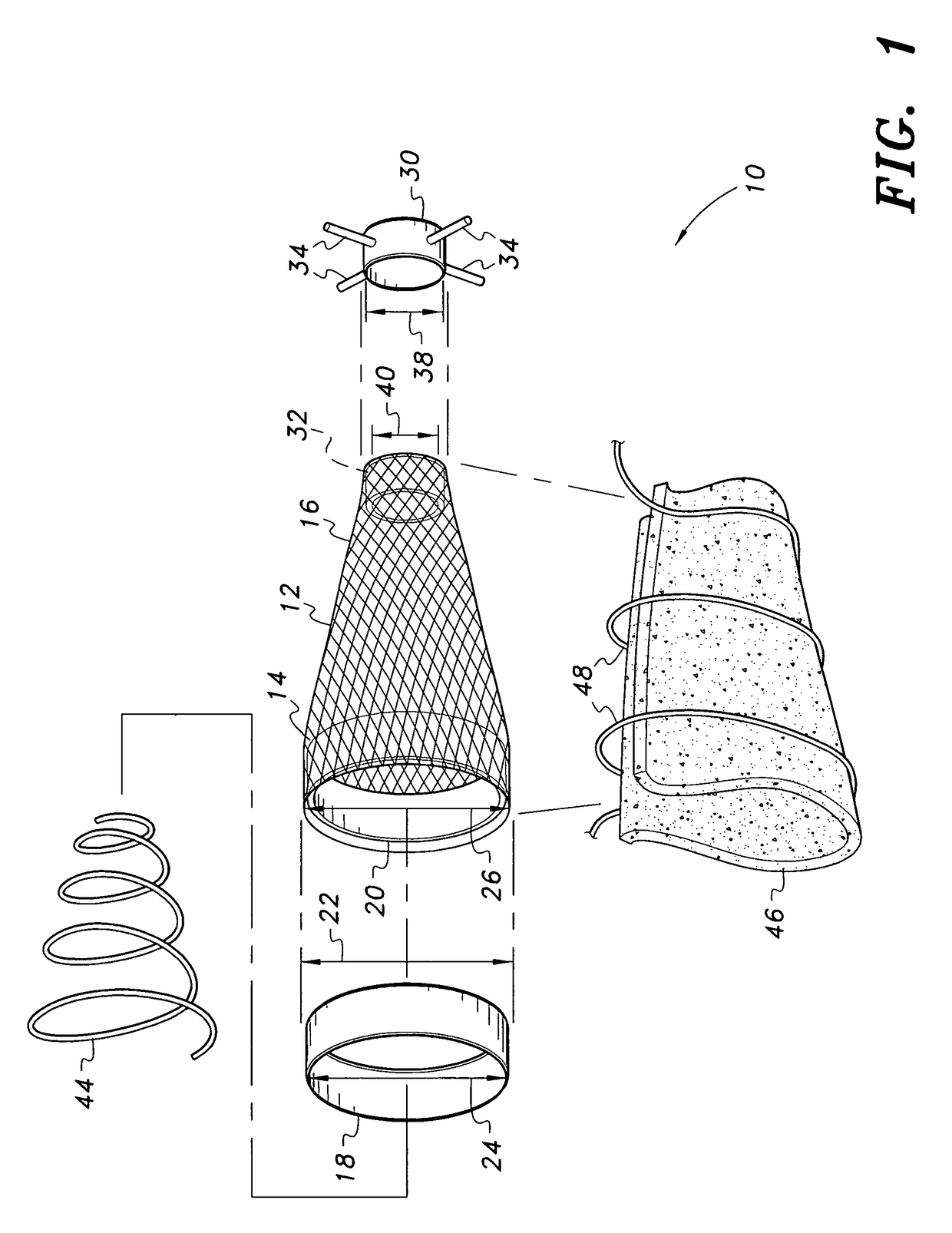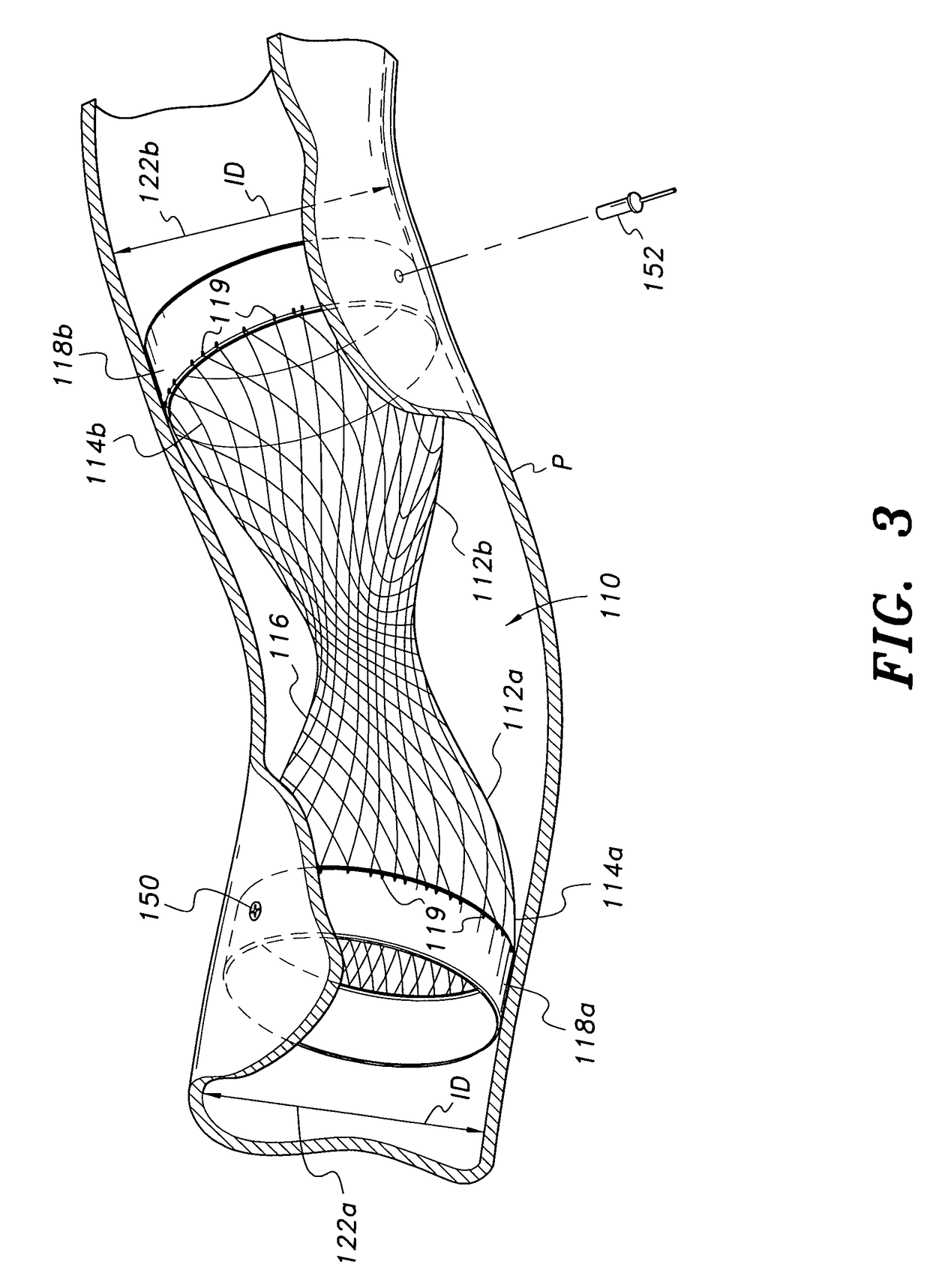Inserts for engine exhaust systems
a technology for inserts and exhaust systems, applied in the field of inserts for engine exhaust systems, can solve the problems of not necessarily the case, the noise level is certainly not acceptable in most operating environments, and the modified exhaust system may produce a sound level, so as to reduce the exhaust sound emissions of the engine exhaust, the flexibility of the insert, and the effect of sound deadening capacity
- Summary
- Abstract
- Description
- Claims
- Application Information
AI Technical Summary
Benefits of technology
Problems solved by technology
Method used
Image
Examples
first embodiment
[0022]FIG. 1 of the drawings provides an exploded perspective view of an insert for an engine exhaust system, designated generally as 10, with FIG. 2 providing a side elevation view in partial section of the insert 10 of FIG. 1 without the optional external fiber batt covering shown in FIG. 1. The exhaust insert 10 of FIGS. 1 and 2 includes a frustoconical mesh component 12 formed of a woven, high temperature resistant material, e.g., corrosion resistant steel (i.e., “stainless” steel), glass or ceramic fiber, etc. Alternatively, a standard steel or other metal may be used, if desired. The material selected for the mesh component should provide sufficient porosity and flow-through to allow exhaust gases to pass therethrough without significant back pressure, and should be sufficiently flexible to allow for installation in a curved pipe by passing the insert 10 through the pipe and any curved portions thereof. A stainless steel braided mesh has been found to work well in testing, but...
embodiment 10
[0024]The larger diameter end 14 of the frustoconical mesh component 12 should retain its open shape to conform closely to the internal diameter of the exhaust pipe in order to avoid significant bypass of exhaust past the outer edge or surface of the mesh. This is accomplished by means of an attachment ring component secured to or about the larger diameter end 14 of the mesh component. In the embodiment 10 of FIGS. 1 and 2, the attachment ring component comprises concentric outer and inner attachment rings 18 and 20, which capture the larger diameter end 14 of the mesh component 12 therebetween. The larger diameter outer attachment ring 18 has an outer diameter 22 configured to fit closely within the inner diameter of the exhaust pipe in which the device is to be installed, and an inner diameter 24 configured to fit about the open end 14 of the mesh component 12. The inner attachment ring 20 has an outer diameter 26 configured to fit closely within the open end 14 of the mesh compon...
second embodiment
[0028]FIG. 3 of the drawings provides an illustration of an exhaust system insert, designated generally as 110 in the drawings. The insert 110 of FIG. 3 comprises a longitudinally symmetrical device having opposed mirror image portions. The insert 110 includes first and second frustoconical sections 112a and 112b, respectively, which are formed of any suitable porous mesh material (e.g., stainless or standard steel screen or mesh, glass fiber, ceramic mesh, etc.). Each section 112a and 112b includes a large diameter first end 114a and 114b and an opposite second end 116 of smaller diameter than the first end. It will be seen that the two frustoconical sections 112a and 112b of the mesh component form a continuous length extending between their opposite ends 114a and 114b, with the smaller diameter end 116 of each portion 112a and 112b being common between the two portions 112a and 112b. The two large diameter ends 114a and 114b are selected so that their outer diameters fit closely ...
PUM
 Login to View More
Login to View More Abstract
Description
Claims
Application Information
 Login to View More
Login to View More - R&D
- Intellectual Property
- Life Sciences
- Materials
- Tech Scout
- Unparalleled Data Quality
- Higher Quality Content
- 60% Fewer Hallucinations
Browse by: Latest US Patents, China's latest patents, Technical Efficacy Thesaurus, Application Domain, Technology Topic, Popular Technical Reports.
© 2025 PatSnap. All rights reserved.Legal|Privacy policy|Modern Slavery Act Transparency Statement|Sitemap|About US| Contact US: help@patsnap.com



